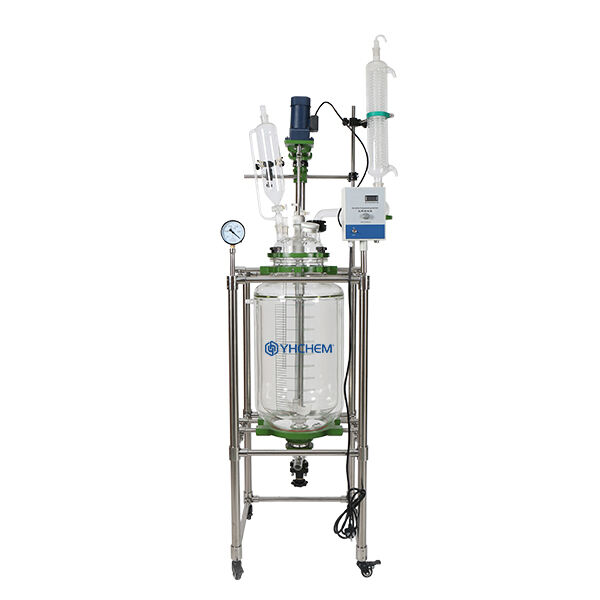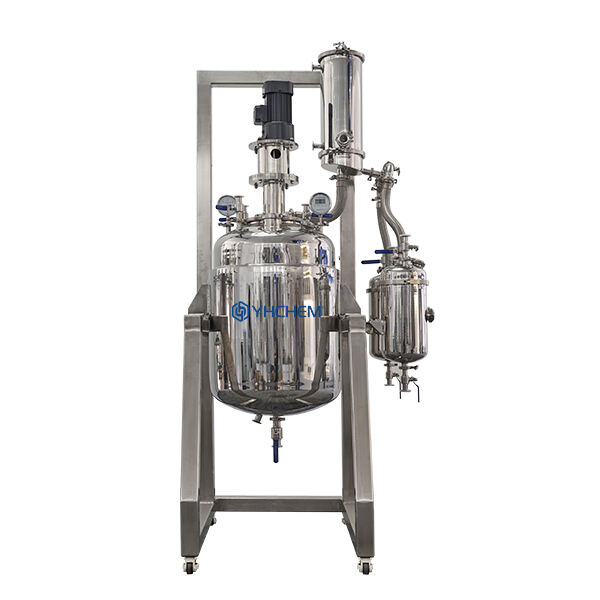Introduction and Basic Selection of Reaction Reactor


The reactor, as an indispensable key equipment in modern industrial production, is the core carrier of chemical reactions. Through precise structural design and parameter configuration, it can meet various process requirements such as mixing, dissolution, reaction, concentration and evaporation, and is widely used in fine chemicals, biopharmaceuticals, food and agriculture, new energy and other industries. YHChem will systematically analyze the technical features of the reactor for you from aspects such as structural composition, functional characteristics, and selection principles, and guide you step by step to complete the selection.
1. Basic Structure and Working Principle of the Reactor
The traditional reactor is composed of seven core components:
1. Reactor body and reactor cover: The main container is usually designed in a cylindrical shape, with the top flange connected to the detachable reactor cover. The wall thickness of the industrial-grade reactor body needs to be calculated based on the working pressure, and the internal polishing accuracy should reach Ra≤0.4μm to reduce material residue.
2. Heat transfer system:
Jacketed type: The outer layer is fed with heat transfer oil or steam. It has a large heat transfer area but a relatively low thermal efficiency (about 60%).
Coil type: Built-in spiral metal tube, suitable for rapid temperature rise and fall (temperature difference rate up to 5℃/min)
3. Stirring device: It includes a motor (0.55-200kW), a reducer, a coupling and a stirring paddle. Anchor blades are suitable for high-viscosity materials (such as resin synthesis), while turbine blades are used for gas-liquid mixing (such as fermentation reactions). There are also more than ten other forms that can be customized according to your needs.
4. Sealing system:
Mechanical seal: Pressure resistance ≤2.5MPa, service life exceeds 8,000 hours
Magnetic seal: Fully enclosed with no leakage, suitable for highly toxic or flammable media
2. Application Scenarios and Material Selection
1.Industrial-grade application:
Stainless steel (316L/304) : Resistant to acid and alkali corrosion, complies with GMP standards, and holds a 75% market share
Hastelloy (C276) : Resistant to hydrofluoric acid corrosion, but relatively expensive
Enamel: Resistant to strong acids (except hydrofluoric acid), but poor impact resistance (prone to porcelain explosion due to sudden temperature changes)
2. Laboratory scene:
High borosilicate glass (3.3 borosilicate) : Light transmittance > 90%, design temperature -80℃ to 200℃
Polytetrafluoroethylene inner lining: Resistant to strong corrosion, suitable for scenarios such as the synthesis of nanomaterials
3. Selection Process
1. Determine the type of reaction → 2. Calculate the working pressure/temperature → 3. Analyze the corrosiveness of the material → 4. Calculate volume requirements → 5. Select heating methods → 6. Design stirring systems → 7. Configure security attachments
Through a scientific selection process, the operational efficiency of the equipment can be increased by more than 30%, and the maintenance cost can be reduced by 50%. The precise selection of reactors not only concerns production efficiency but is also the core guarantee for achieving process safety, energy conservation and consumption reduction. If you have more customization needs, please feel free to contact YHChem at any time and we will serve you wholeheartedly.

 EN
EN
 AR
AR
 BG
BG
 HR
HR
 DA
DA
 NL
NL
 FI
FI
 FR
FR
 DE
DE
 EL
EL
 HI
HI
 IT
IT
 JA
JA
 KO
KO
 NO
NO
 PL
PL
 PT
PT
 RO
RO
 RU
RU
 ES
ES
 SV
SV
 TL
TL
 ID
ID
 SR
SR
 UK
UK
 HU
HU
 TH
TH
 TR
TR
 GA
GA
 BE
BE
 BN
BN
